
8 minute read
Electric outboards show their stuff
Island Institute, Pendleton Yacht Yard partner on project
IN AN EFFORT to “electrify the working waterfront” in Maine, staff from Island Institute (publisher of The Working Waterfront) along with Gabe Pendleton, owner of Pendleton Yacht Yard on Islesboro, put new electric outboards through their paces on Rockland Harbor on July 27.
Advertisement
Pendleton Yacht Yard’s new fully electric boat, named Take Charge, will be used to demonstrate electric marine propulsion in a partnership with Island Institute.
“We’re thrilled to be using an electric boat for our business,” Pendleton said. “We’re just beginning to appreciate the benefits of electric propulsion and look forward to sharing what we learn from this demonstration project with other businesses in the Midcoast.”
The business will use the boat— powered by a 40-horsepower Flux Marine electric outboard, charged with solar power—for service calls, moving marine equipment and materials, and other working waterfront needs. While the boat is in use, data will be gathered using a “baseline usage device” to help inform improvements in future electric boat hull design. As part of the partnership, Pendleton will host a number of sea trials for other businesses and individuals interested in electric propulsion, offering firsthand experience with this emerging technology.
“We have a vision for a fully electric working waterfront in Maine,” said Kim Hamilton, Island Institute president. “It’s right for the environment and right for business resilience. This partnership with Pendleton Yacht Yard, and others in the works, are important steps in moving our state towards its climate goals—seeing is believing.”

Electric outboard motors offer many benefits including significantly reduced Co2 emissions (even when charged with non-renewable energy sources), less water pollution, more predictable operating costs, and quiet operation.
In addition to funding the partnership with Pendleton, Island


Institute’s Center for the Marine Economy is working in a number of areas to advance the electrification of Maine’s working coast including creation of an introductory course on electric boats (with Maine Community College System and Mid-Coast School of Technology— and a follow-on course planned for electric outboard maintenance), solar energy installations at wharfs and docks, and seeking to improve the charging infrastructure on Maine’s coast.
The boat’s name—Take Charge—was the winning entry in a contest that drew almost 300 entries. The winner was Judy Long of Orrington.
Charming 3-bedroom cape on a beautifully landscaped acre with fruit trees, perennials, and veggie gardens and includes a ROW to the shore. With a 3-car garage, there is plenty of space for cars and a boat. The interior is lovely with wood floors, two full baths, wood stove in the living room to supplement HWBB heat, and a southwest face composite deck with retractable awning from which to enjoy the gardens. Twenty minutes to MDI for restaurants, galleries, and museums, and Acadia National Park for hiking and biking or just walking. Six miles from Ellsworth. $510,000.

We’ve




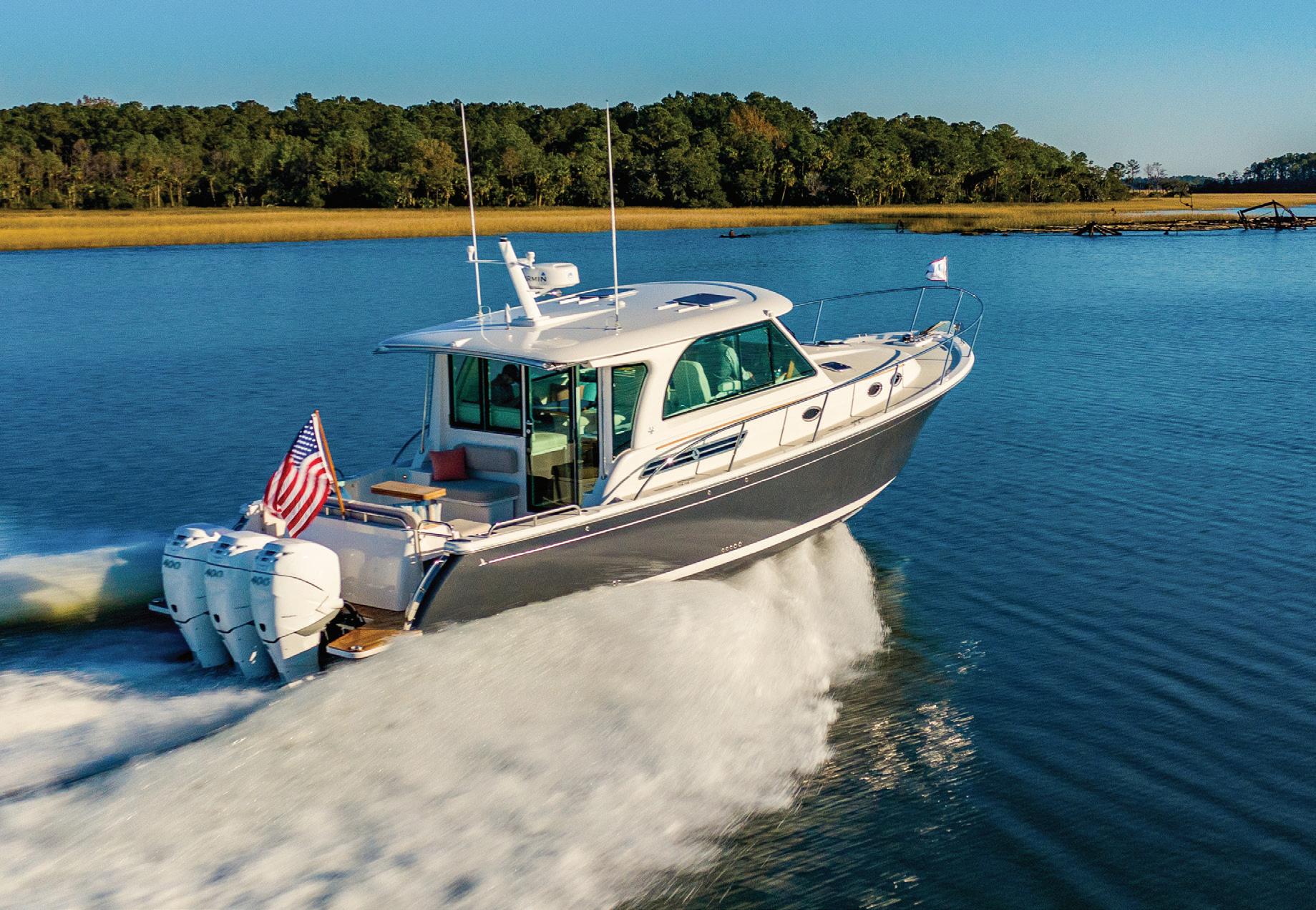




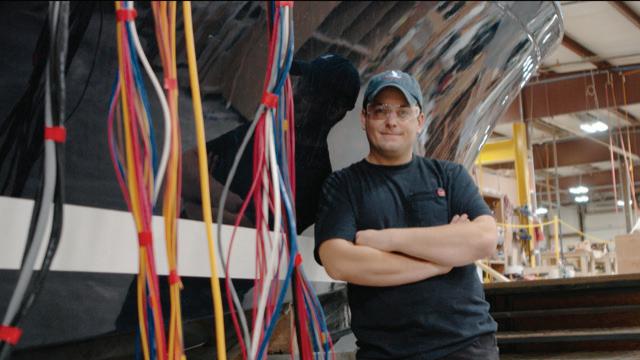
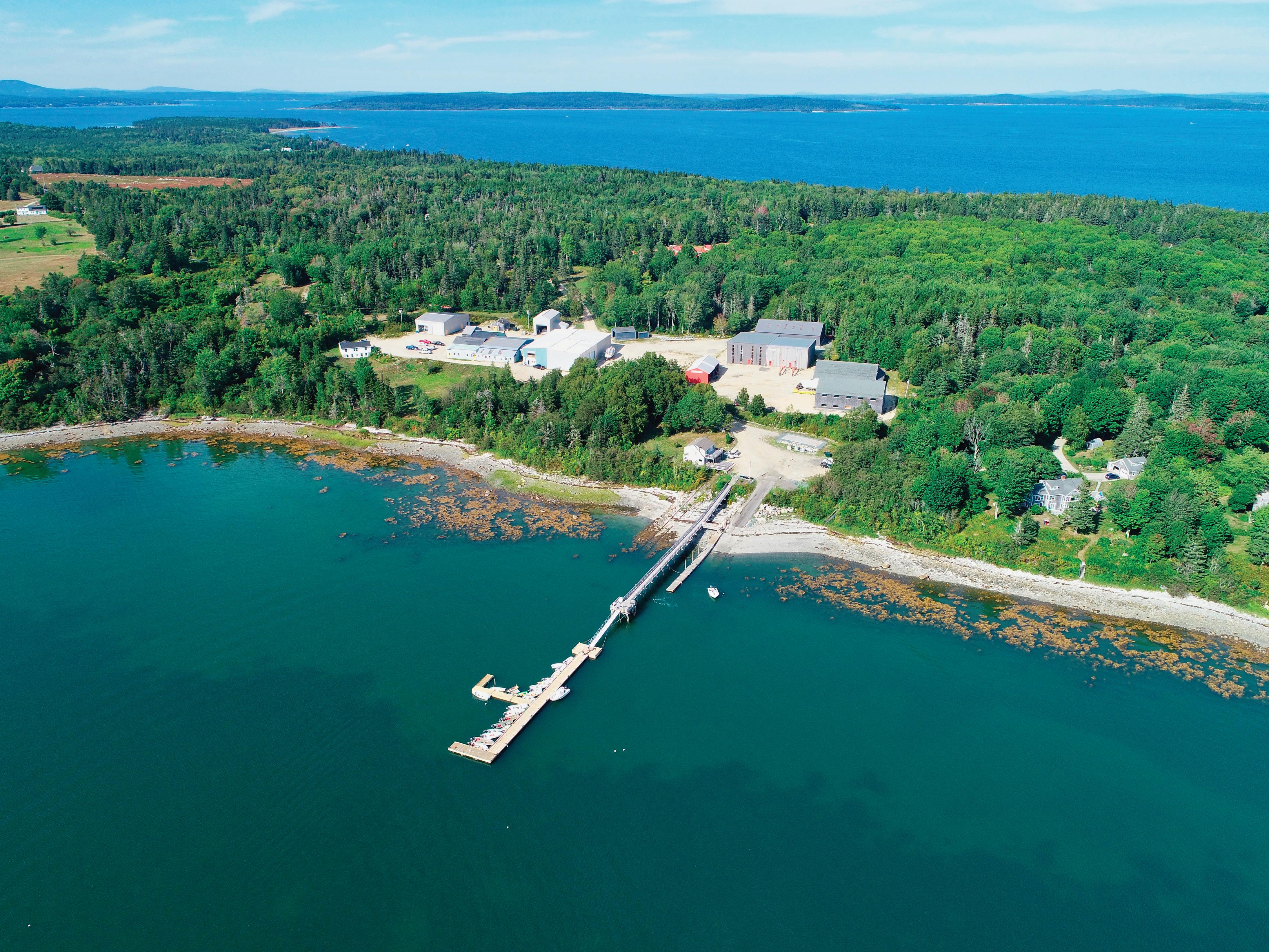
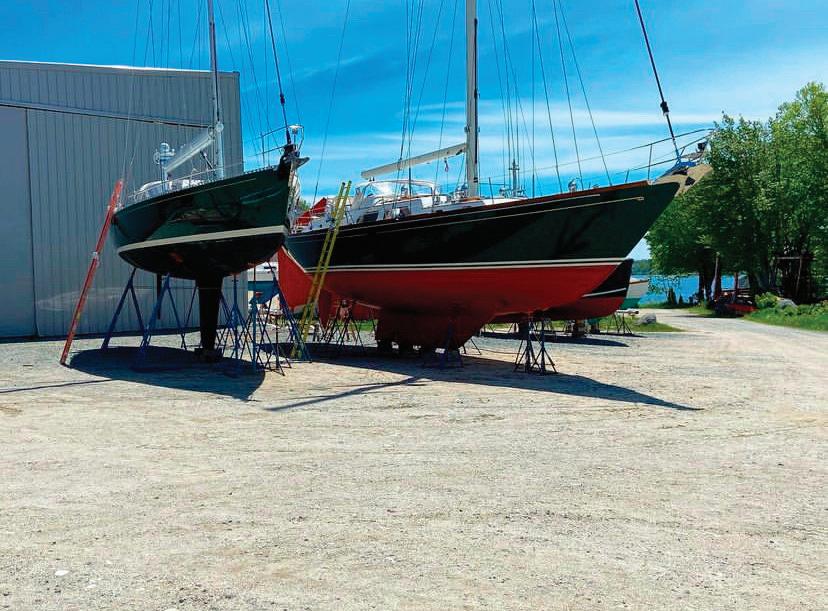
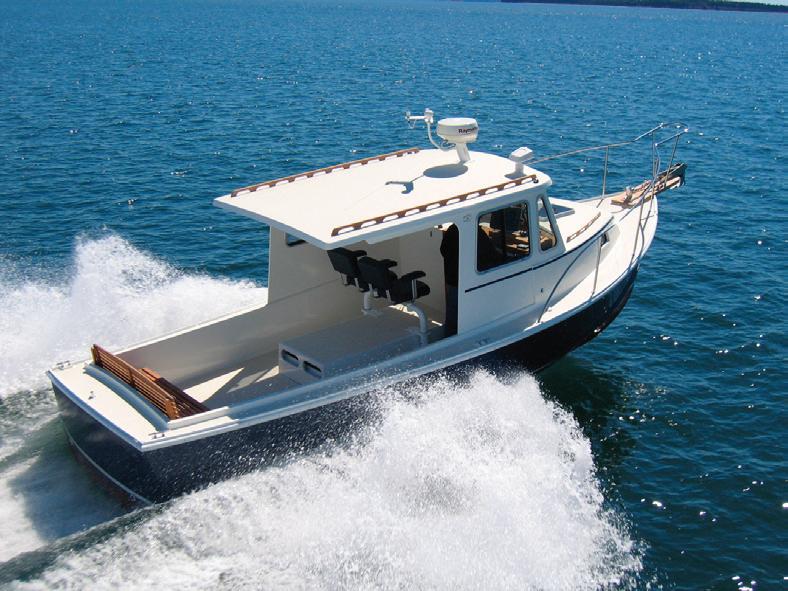
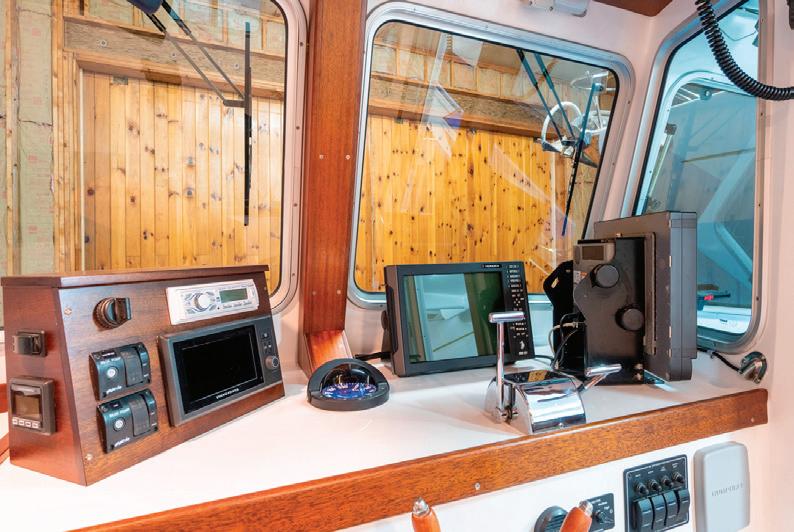
Blueberries
continued from page 1 glaciers onto the sandy soils of eastern Maine, creating millennia-old barrens that glimmer purple in August, then flaming red in autumn.
These are just a few of many things, say Maine blueberry farmers, that make the wild blueberry far from ordinary.
“From an industry perspective we need to continue to decouple the wild blueberry from the cultivated blueberry. Consumers often don’t understand the differences between them,” says Colleen Craig of Wyman’s, another Downeast business with deep roots in blueberries— the Milbridge-based grower and processor is preparing to celebrate its 150th anniversary next year.
Wyman’s is the largest branded supplier of wild blueberries in America, selling its distinctive blue bags into grocery store freezers across all 50 states. Recently, Wyman’s added a line of frozen fruit cups, and shelf-stable products like wild blueberry juice and dried blueberry powder.
“Our mission is to help people eat more fruit. According to the USDA Dietary Guidelines from 2020-2025, eight out of ten Americans are not getting the recommended daily amount,” says Craig. “We’re committed to innovation within the industry and developing fruit-forward products.”
Value Added
In business speak, converting a basic product like a wild blueberry into something like blueberry juice is known as “adding value.” Some farms are taking other paths to increase their profitability. One of Maine’s largest growers, Passamaquoddy Berries, which manages 2,000 acres of wild blueberry barrens, cushions volatile field prices by selling some berries under its own brand. Hanscom has diversified her farm’s business with the addition of two rental cabins, and plans to begin hosting weddings next year.
Eric Venturini, executive director of the Maine Wild Blueberry Commission, says there is growing excitement for value-added wild blueberries, both in the industry and among consumers.
“There are a lot of opportunities for producers to diversify their offerings, increase the cash flow to their business, and have a more consistent income and stability,” Venturini says.
Consistent income and stability can be hard to come by in agriculture, and wild blueberries are no exception. Significant price drops over the last decade hit a low in 2017, when the average price to growers was 26 cents per pound. Since then that number has rebounded and last year hit 72 cents per pound, and there are other positive indicators.
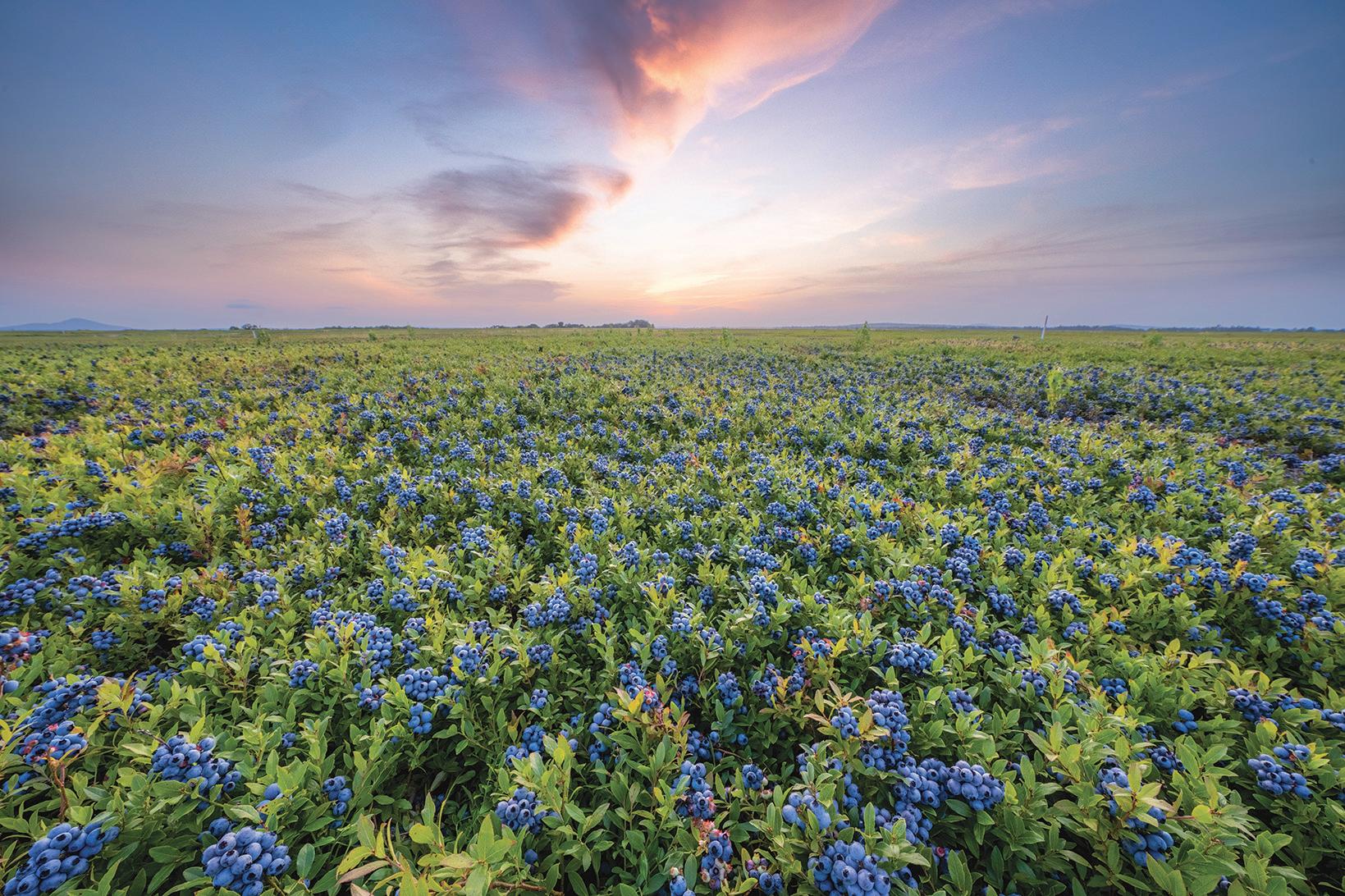
Over the last five years, frozen wild blueberry sales at retail have increased 88%. But as in the rest of the U.S. economy, wild blueberry farmers are facing rising costs and labor shortages.
The industry is keeping its eye on other challenges too, like the potential impacts of climate change, including droughts like the ones that impacted Maine growers for several years before this year’s plentiful rainfall turned that tide.
“We are working very hard to free up financial and technical support to help people become more resilient to climate change through sustainable water resource development and irrigation,” says Venturini.
Blueberry research is one of three major focus areas for the Wild Blueberry Commission, alongside promotion and policy work, and they are not alone. In her work as wild blueberry specialist with the University of Maine Cooperative Extension and School of Food and Agriculture, Dr. Lily Calderwood connects farmers with research conducted by UMaine and vice versa. Recently, Calderwood’s group completed a two-year study on the use of mulch to help retain moisture on the fast-draining, sandy soils where wild blueberries grow. The good news is it helps.
“These drought years have been so severe that mulch alone will not solve the problem most likely, but it can buffer the problem. Some fields will still need irrigation,” says Calderwood.
Abbie Sennett and husband Jacob Lennon relied on their irrigation system during the drought in 2022. Now in their 20s, the pair met as young teenagers working on Abbie’s family farm in Albion, perhaps even more well-known for bees than for blueberries. Abbie’s father, Lincoln Sennet, is the founder of Swan’s honey, a famous Maine brand.
After harvesting their berries from barrens in Machias, each day Abbie and Jacob transport them back to Albion, where they have easy access to labor for processing.
“The biggest challenge we face is labor shortages,” says Abbie. “A monthlong job isn’t enticing to most people.”
At their young age, and with their willingness to assume leadership roles in the industry, Venturini says Abbie and Jacob represent a positive direction for Maine’s wild blueberry industry.
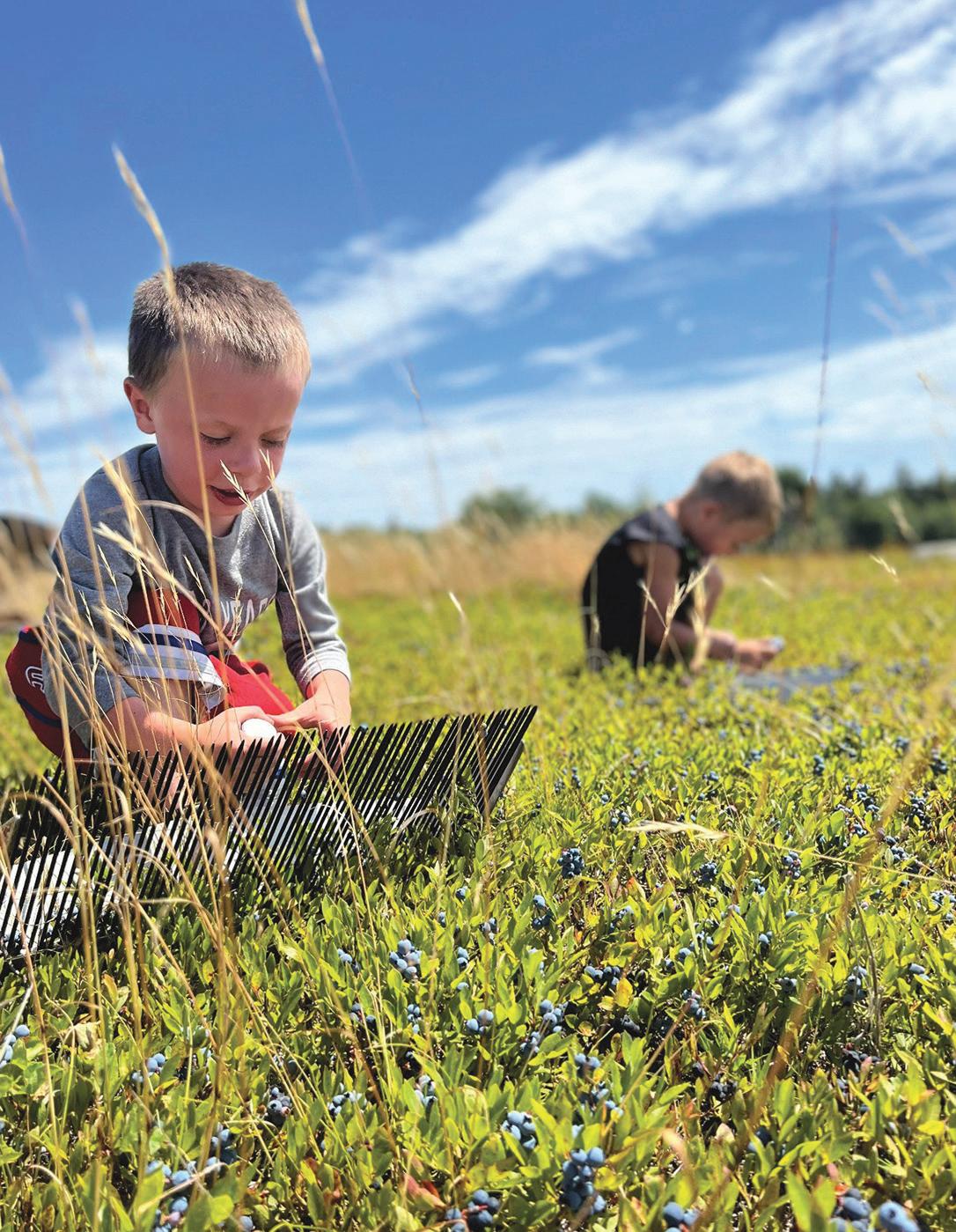
As of two years ago, the average age of a Maine wild blueberry farmer was 64.5 years old.
“I’m very hopeful that will continue,” says Venturini of the younger folks, “and we can help prepare a new cohort of wild blueberry farmers to step into the industry and continue this tremendous tradition that’s really part of the cultural underpinning and part of Maine’s heritage.”
Like many Mainers, Abbie has fond childhood memories of blueberry season, and says she misses the days of hand raking. But she’s also fond of wild blueberry farming, today.
“There’s something about the Downeast area when everyone goes for the harvest, the tourists want to see the fields and buy blueberries, I think it’s special,” she says. “What’s more Maine than wild blueberries? There’s not much.”
Dogfish
continued from page 1 but is being done in collaboration with a separate project to determine if the BRDs are effective on commercial longline fishing vessels that are targeting swordfish and tuna off the coast of North Carolina. Both projects are receiving funding from a NOAA Saltonstall-Kennedy grant.
The North Carolina study previously captured 141 sharks (covering nine species) in 15 days of commercial longline fishing, but only 34 of those were on hooks with BRDs that emitted an electrical field. That represents a shark catch reduction of more than 50% with BRD-equipped hooks.
For the Maine project, students this day are fishing four fishing rods with 60-pound test line. Two are equipped with active BRDs emitting electrical fields, and two have BRDs that are not activated and serve as a control group. The cylindrical devices are 8.5-inches-long, made of PVC, and equipped with microprocessors and lithium batteries.
Sharks are repelled by the BRDs because they have the uncanny ability to sense tiny electrical fields, which allows them to home in on their prey. Fish, however, are not repelled because they don’t have the same sense.
Out at sea off Biddeford, students are pulling in pollock, red hake, and white hake in addition to dogfish. Of the 21 dogfish hooked during the day, only a handful of them go after the chum on lines with active BRDs. The results suggest the devices are effective, but not 100%.
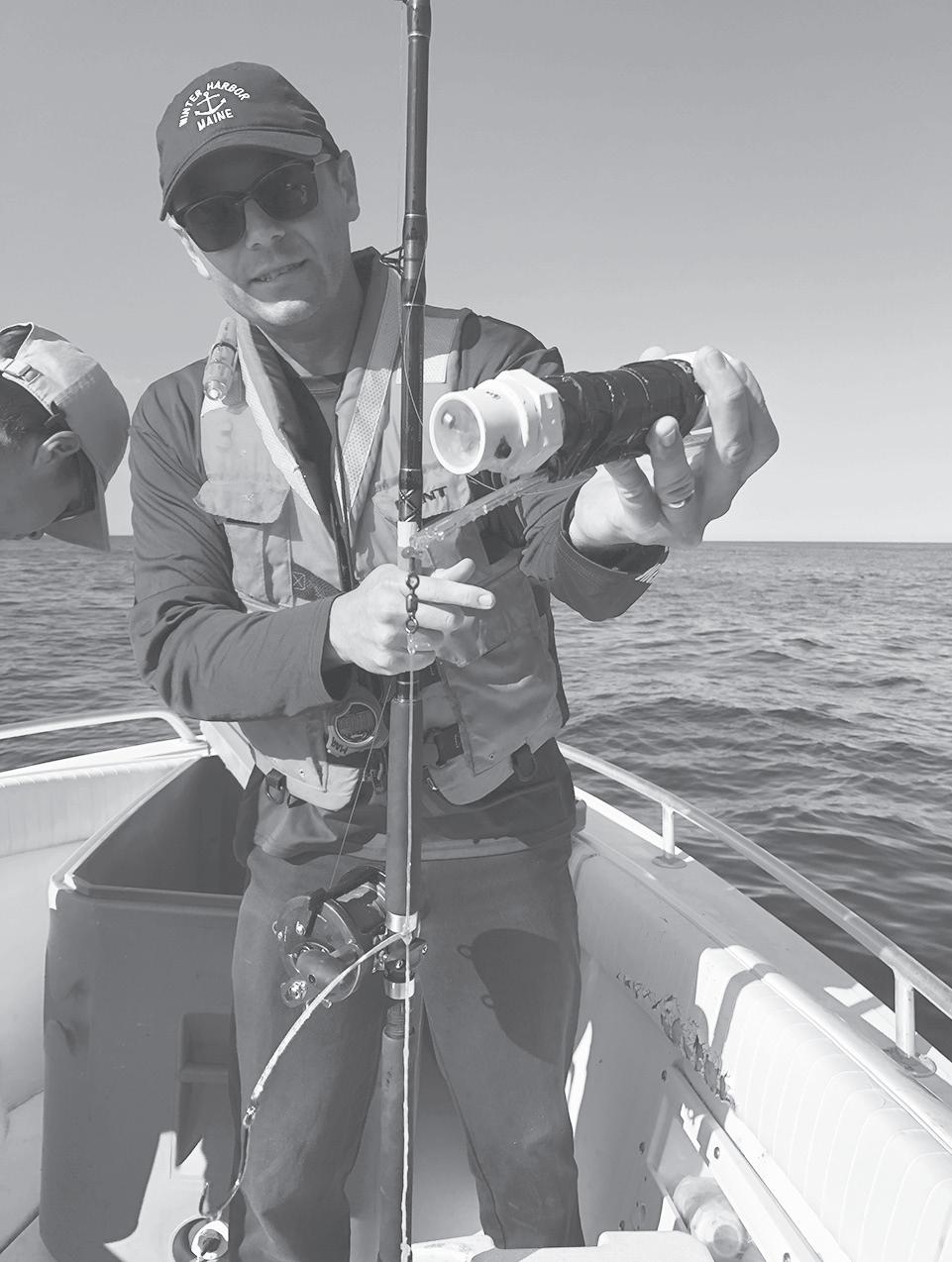
Clayton Nyiri, a marine science major at UNE, is leading the field testing portion of the project. When the dogfish are brought aboard, he measures them and takes blood samples to determine their stress levels. Some of them are put into a water-filled cooler to be brought back to land to be used for laboratory tests.

Collecting the data is vital to determine the viability of the devices, said Nyiri, who plans to make a career studying sharks. He hopes to write an academic paper on the project this fall and have it published in a scientific journal next year.
Bycatch reduction devices would help fishermen financially, while also helping shark populations remain healthy, he said.
“It’s a win-win,” he said. “Reducing bycatch is good for the fishery, and it’s good for the environment.”
UNE graduate student Michael Nguyen is leading the laboratory testing trials, with Mohan—who has a doctorate in marine science—serving as the adviser to both Nguyen and Nyiri.
Nyguen said the battery life and the device housing need to be revamped to make them durable, so it could take time before they are in widespread use.
“As of now, [the testing] serves as a proof of concept and it's exciting to see that in the lab and field it works well deterring the most common shark in the western North Atlantic,” he said.
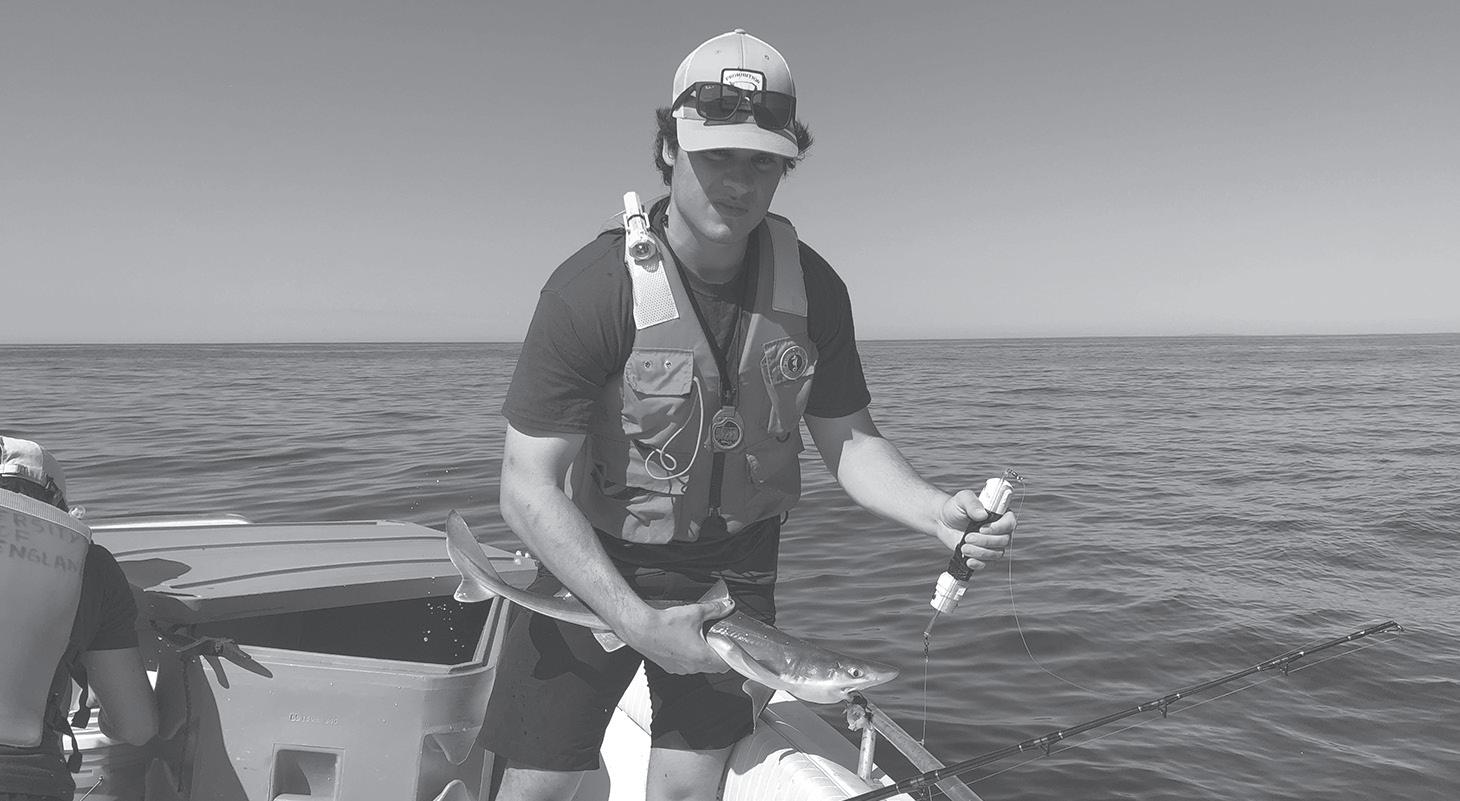
Whether the BRDs become must-have equipment for fishermen remains to be seen. But the interest was high among recreational fishermen at an informational table that UNE set up at a recent fishing seminar hosted by Saco Bay Tackle at Dunegrass Country Club in Old Orchard Beach.
“They were like ‘Can we buy this from you now, because we need something like this,’” Mohan said.
Atlantic Spiny Dogfish (Squalus acanthias)
APPEARANCE:
Dogfish are slim with a narrow pointed snouts, two dorsal fins and ungrooved large spines. They are gray above and white below with characteristic white spots. Males grow up to 3.3 feet, and females grow up to 4 feet.
RANGE:
Along the Eastern Seaboard, dogfish live from Labrador to Florida, and are most abundant from Nova Scotia to North Carolina.
MARKET:
There is little consumer demand for dogfish in the U.S., but it is commonly used in Europe as the fish in “fish and chips.”








